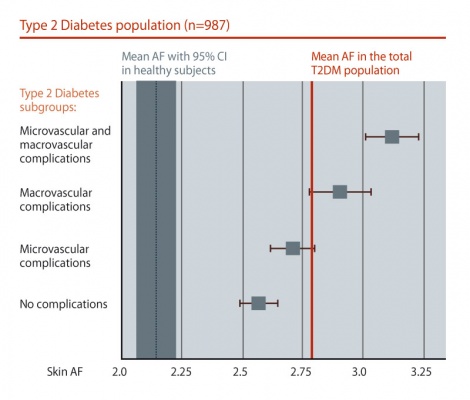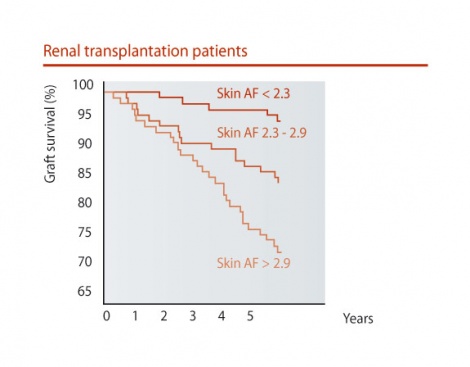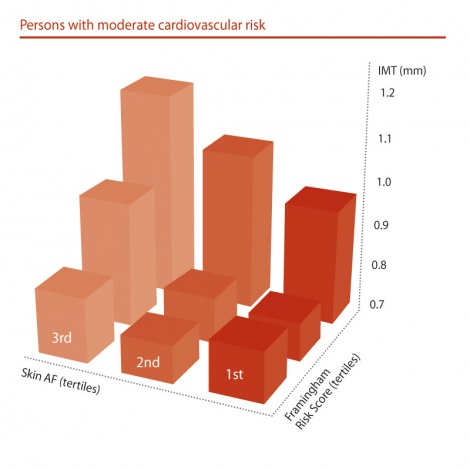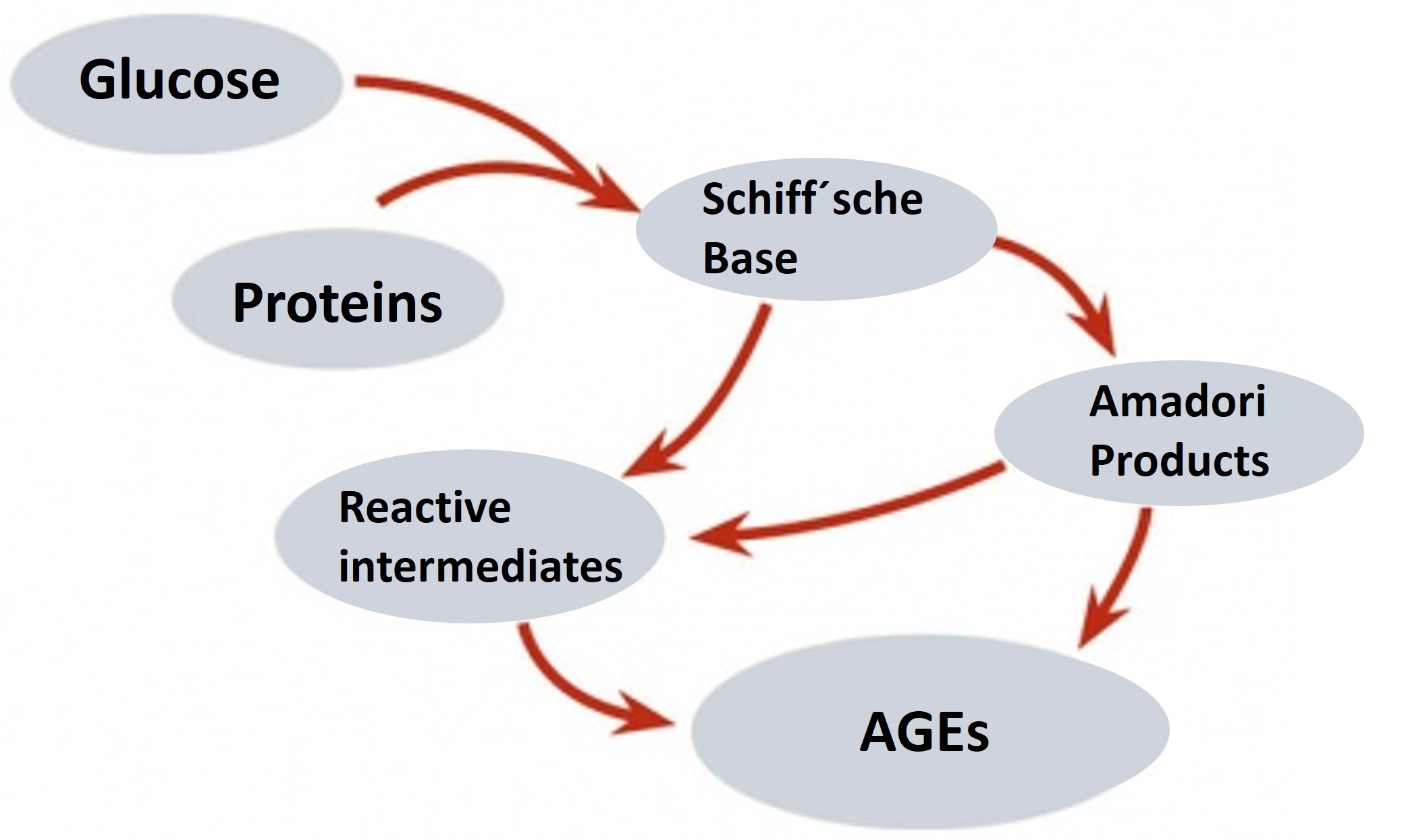Advanced Glycation Endproducts
AGES – ENDPOINT OF MANY DISEASES
AGEs play a crucial role in the development of age-related chronic diseases such as diabetes, kidney disease and cardiovascular disease.
The accumulation of AGEs in tissue, not blood, reveals the memory effect for glycometabolic and oxidative stress and is a strong predictor of cardiovascular complications. While AGEs naturally accumulate in tissues throughout life, this process is accelerated in high-risk individuals and patients1.
Elevated tissue AGEs are associated with premature kidney, eye and nerve disease in diabetic patients. They correlate closely with future cardiovascular morbidity and mortality2. Drugs to reduce AGEs or prevent their accumulation are in development and are already undergoing clinical trials.
CLINICAL APPLICATIONS
-
Assessment of the individual cardiovascular risk
-
Identification of patients at high risk
-
Therapy monitoring and optimization of the therapy plan
-
Reduction of drug costs and side effects
-
Monitoring of intensive care patients
-
Monitoring of dialysis and transplant patients
-
Public and occupational healthcare
COMPREHENSIVE VALIDATION
AGE Reader has been validated in comparison with invasive gold standard procedures (skin biopsies1, 3). The outstanding clinical benefit of the device has been demonstrated in countless studies by renowned institutions on thousands of patients with diabetes, chronic kidney failure or cardiovascular disease3, 4, 5, 6, 15. There is a broad literature base spanning more than ten years.
PERFECT FOR STUDIES AND RESEARCH
-
Clinical studies
-
Diabetes
-
kidney failure
-
cardiovascular diseases
-
-
Pharmaceutical studies
-
Nutrition studies
-
Ageing research
-
Skin care research
-
Epidemiologic studies
AGE READER FOR THE STRATIFICATION OF INDIVIDUAL RISK
DIABETES
-
Best single predictor of cardiovascular risk in combination with UKPDS (except age)2.
-
Independent predictor of microvascular complications7.
-
Shows vascular damage in the diabetes outpatient clinic and identifies diabetics at increased risk of complications3.

Chronic kidney disease
-
Independent predictor of mortality in cardiovascular disease in hemodialysis patients4.
-
Strong independent predictor of mortality and organ loss in transplant patients8.
-
AGEs correlate with arterial stiffness and diastolic function in hemodialysis and peritoneal dialysis patients9, 14.

Cardiovascular disease
-
Independent marker of acute myocardial infarction10.
-
Non-invasive marker of inflammatory stress in stable coronary artery disease11.
-
Predictor of cardiovascular morbidity and mortality in STEMI patients11, 12.

IMPROVED STATEMENT AT SCORE, FRAMINGHAM, UKPDS, IMT
-
Improved conclusions in addition to conventional risk calculations2.
-
Associated with early IMT increase and atherosclerosis, independent of risk factors and scores2, 15.
-
AGEs show pathogenic associations not covered by risk scores16.

Literature:
1 Meerwaldt R et al. Cardiovascular Diabetology 2008; 7: 29 | 9 Ueno H et al. Metabolism Clin Exp 2008; 57(10): 1452-1457 |
2 Lutgers HL et al. Diabetologia 2009; 52(5): 789-797 | 10 Mulder DJ et al. Circulation 2005; 112:II-371 |
3 Lutgers HL et al. Diabetes Care 2006; 29(12): 2654-2659 | 11 Mulder DJ et al. Nehterlands Heart J 2009; 17(4); 162-168 |
4 Meerwaldt R et al. J Am Soc Nephrol 2005; 16: 3687-3693 | 12 Meerwaldt R et al. Eur J Vasc Endovasc Surg 2008; 36(2) 125-131 |
5 Meerwaldt R et al. Diabetologia 2005; 48: 1637-1644 | 13 Meerwaldt R et al. Diabetologia 2004; 47: 1324-1330 |
6 Meerwaldt R et al. Ann N Y Acad Sci 2005; 1043: 299-307 | 14 Hartog J et al. J Card Failure 2008; 14(17): 596-602 |
7 Gerrits E et al. Diabetes Care 2008; 31(3): 517-521 | 15 Mulder DJ et al. Artherosclerosis 2008; 197(1): 217-223 |
8 Hartog J et al. Transplantation 2009; 87: 1069-1077 | 16 Smit AJ at al. Cur Med Chem 2004;11: 1241-1253 |




